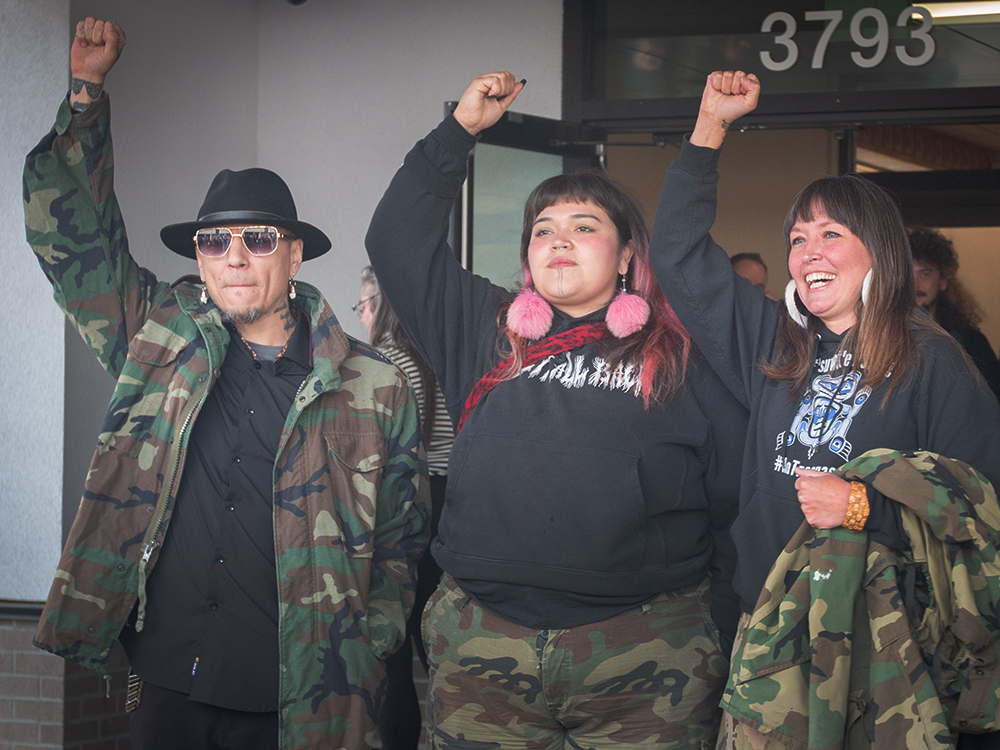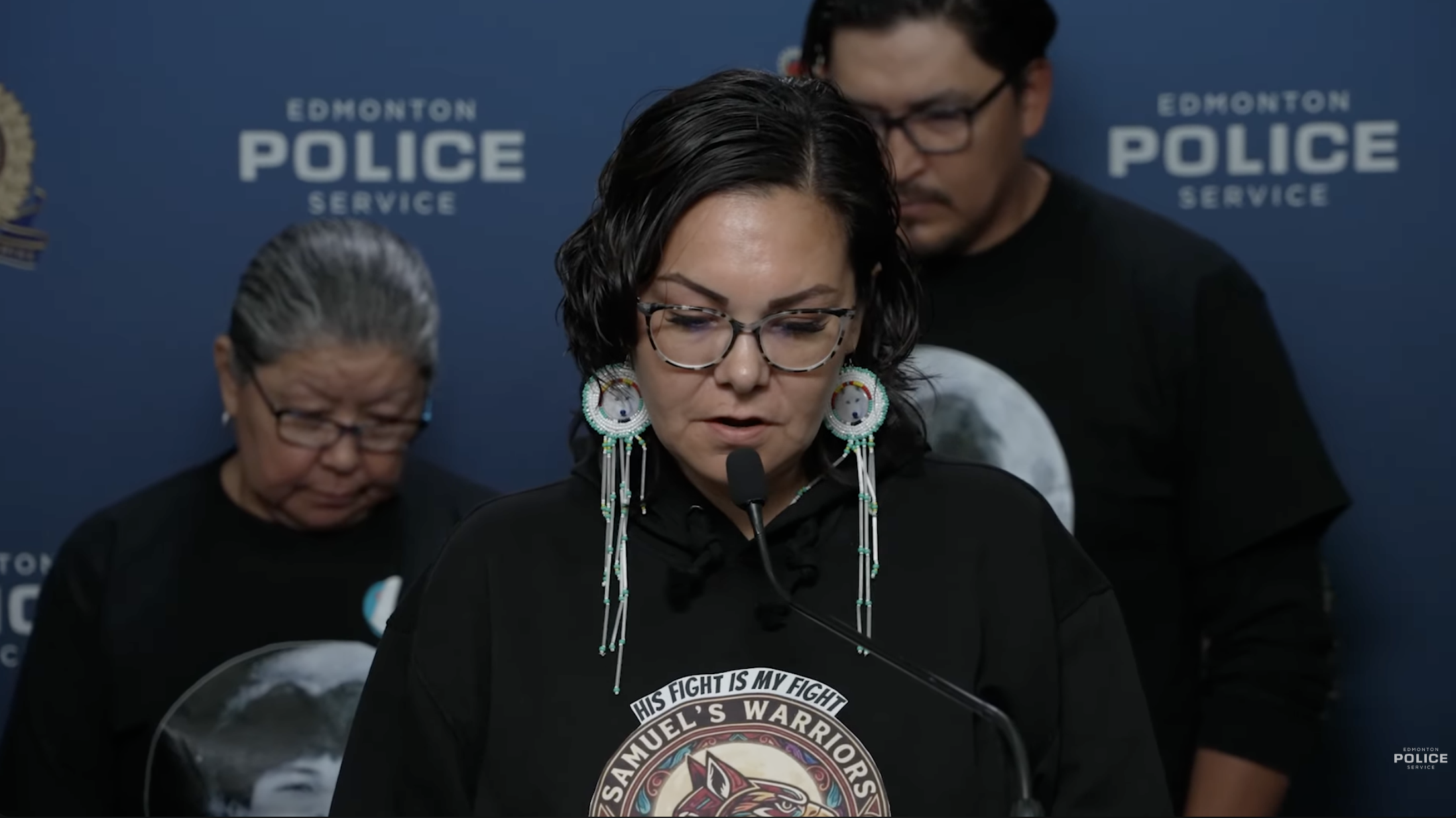How a failed search for Indigenous food delivery led me to explore ‘Winnipeg’s’ culinary scene
On a recent trip to the city, Anna McKenzie writes, a search for ‘Indigenous’ on Uber Eats pulled up just one unexpected result


The IndigiNews team returned last month from Treaty One territory in “Winnipeg,” where we attended the annual Indigenous Journalists Association conference (formerly known as the Native American Journalists Association).
One thing we were all excited about — in the city with the highest population of urban Indigenous people in the country — was to try some of the local Indigenous cuisine.
So after a long day leading panels and networking, my coworker searched “Indigenous” in the search bar on Uber Eats.
To our surprise, the only result that came up was Walmart.

We had heard of many Indigenous-owned restaurants in this city, so we felt confused as to why this was the only result showing up. The stereotypical connection left a bad taste in our mouths, given Walmart’s history of cultural appropriation, as well as long-standing, tired tropes about Walmart and Indigenous people.
I spoke with other conference attendees — many of whom were also Indigenous — and the feeling was the same.
As weeks went by, I kept thinking about why we were unable to find Indigenous restaurants on Uber Eats, so I reached out to Uber Canada to ask why this happened.
In an email response from Uber Canada to IndigiNews, they told me that Walmart sells a book that includes the term “Indigenous” in its title, the Hilroy Indigenous Artist Collaboration Stitch Book.
“This is simply the only item being sold by a merchant in the geographic area with ‘Indigenous’ in its name,” said the spokesperson.
“We are always looking for more merchants and cuisine types to join the Uber Eats platform.”
Of course, not all restaurants have the capacity or desire to sign on to delivery platforms like Uber Eats. But this omission is symptomatic of a wider problem, which is that many barriers still exist in the restaurant industry for Indigenous businesses — from a lack of visibility to challenges with sourcing and harvesting ingredients.
Opening the Uber Eats app in “Winnipeg,” you can search “Indian,” “Japanese,” “Italian,” or “Mexican” and receive a myriad of restaurant suggestions. Scrolling through all of the categories offered, basically, every cuisine and dietary need is reflected, except for Indigenous cuisine or any mention of Indigenous people — anywhere.
Meanwhile, the city’s Indigenous food scene is thriving — Tourism Winnipeg recently released a comprehensive Indigenous food guide, in which the writer shares that the city’s Indigenous food offerings have nearly doubled in the last few years.
So, determined to learn more, I began researching restaurants and reaching out to their owners to understand the challenges they may be facing. In the process, I also learned more about their incredible cuisine — everything from wildflower risotto to sweetgrass ice cream.
What I came away with is that these restaurants are worth seeking out, even if it means putting in a bit of extra legwork to find them.
Feast Cafe and Bistro
While we were in the city this past August, a few of us from the IndigiNews team met at Feast Cafe and Bistro to have lunch with my two aunties who live nearby.
We shared memories about my mooshum, Murray McKenzie, who was a photojournalist and radio broadcaster in Manitoba. We shared some big laughs, all while the smell of freshly baked bannock surrounded us. My auntie gifted us with an abundance of sage. It was a beautiful experience, beginning to end.
Peguis First Nation member Christa Bruneau-Guenther founded the restaurant to “become a pillar of the West End [of Winnipeg],” according to Feast’s website. She says she wants each visitor to experience modern dishes rooted in First Nations foods while celebrating the spirit of her culture.
The restaurant has had its share of challenges as a small business — from COVID closures to break-ins — but remains a community pillar.
During our visit, we dined on Manitoba pickerel sliders, bison brisket and sweetgrass ice cream. Other items on the menu included bison chilli as well as bannock pizza and tacos.

Promenade Brasserie
Jay Lekopoy is the owner of Promenade Brasserie, a French-Métis restaurant that overlooks the Red River.
He said that visibility in the tech sector isn’t the only barrier he’s encountered as a Métis restauranteur. When it comes to ingredients, he says, there have been barriers to serving naturally occurring foods and medicines due to harvesting and gathering laws in Manitoba.
His restaurant has had to shapeshift to bring food that is both authentic and in alignment with provincial law.

“It’s a really awkward conversation to have, and it shouldn’t be,” said Lekopoy.
“You can get a foraging license in other provinces but not in Manitoba. It can [only] be used for ceremony,” said Lekopoy.
Despite the pushback from health and agricultural regulations, Promenade Brasserie’s menu is on fire with creativity, including a sugary frybread with Saskatoon berries, bison short ribs and pan-fried pickerel.
Sharecuterie
Amid the COVID-19 pandemic, Cassandra Carreiro started Sharecuterie — an Indigenous woman-owned business that, like Promenade Brasserie, focuses on local ingredients.
Sharecuterie offers catering services, has a cafe and wine bar, and includes Indigenous-inspired menu items, including their mini bannock buns.
“Visibility and inclusion is important to us,” it states on the Sharecuterie website.
The restaurant is also a space for community connection. Sharecuterie recently hosted a workshop where participants learned to bead with Shirley Peters, a Muskego Ininew Iskwew (Swampy Cree woman) from Fox Lake Cree Nation.

Bistro on Notre Dame (BoND)

Located in downtown “Winnipeg,” BoND is open late and offers both comfort food and healthy options.
“We are a Métis owned restaurant striving for sustainability in all that we do, from efficient cooking methods to supporting local food producers,” said owner and manager Dean Herkert.
Herkert said he began in the hotel and restaurant industry before starting his own business.
“It started with the source local movement, and the more I looked into servicing local, [he thought] but what about sourcing Indigenous?”
Herkert said traditional farming practices, like intercropping, have been around for generations. Because of colonization, he added, First Nations and Métis People have lost a lot of knowledge about our respective cuisine, and that is something that is being reclaimed at this time.
“I’m inspired to use as many Indigenous ingredients as possible.”
Dishes on the menu include a wildflower risotto, a bison melt, walleye mac and cheese and more.
More work to be done
After speaking with some of the Indigenous restaurant owners in “Winnipeg,” it’s clear that there needs to be significant changes to allow for the sale and distribution of Indigenous foods. Food has been weaponized for Indigenous people since contact — from losing our traditional diet and connection to land to hunting, gathering and fishing.
I think of my mooshum, Murray, sitting on the edge of his trapline with his son — my dad, when he was still a little boy. They went to say goodbye to the land, knowing it was about to be flooded away for the purpose of a hydroelectric dam. I think of the loss of connection to our traditional foods and the sicknesses, like diabetes, that have come with it.
In this way, simply sitting at a table and dining on bison, pickerel and wild rice helps to heal these intergenerational losses, and for me, this is the power of our Indigenous foods.
Author
Latest Stories
-
‘Bring her home’: How Buffalo Woman was identified as Ashlee Shingoose
The Anishininew mother as been missing since 2022 — now, her family is one step closer to bringing her home as the Province of Manitoba vows to search for her
-
Land defenders who opposed CGL pipeline avoid jail time as judge acknowledges ‘legacy of colonization’
B.C. Supreme Court sentencing closes a chapter in years-long conflict in Wet’suwet’en territories that led to arrests
-
Samuel Bird’s remains found outside ‘Edmonton,’ man charged with murder
Officers say Bryan Farrell, 38, has been charged with second-degree murder and interfering with a body in relation to the teen’s death













